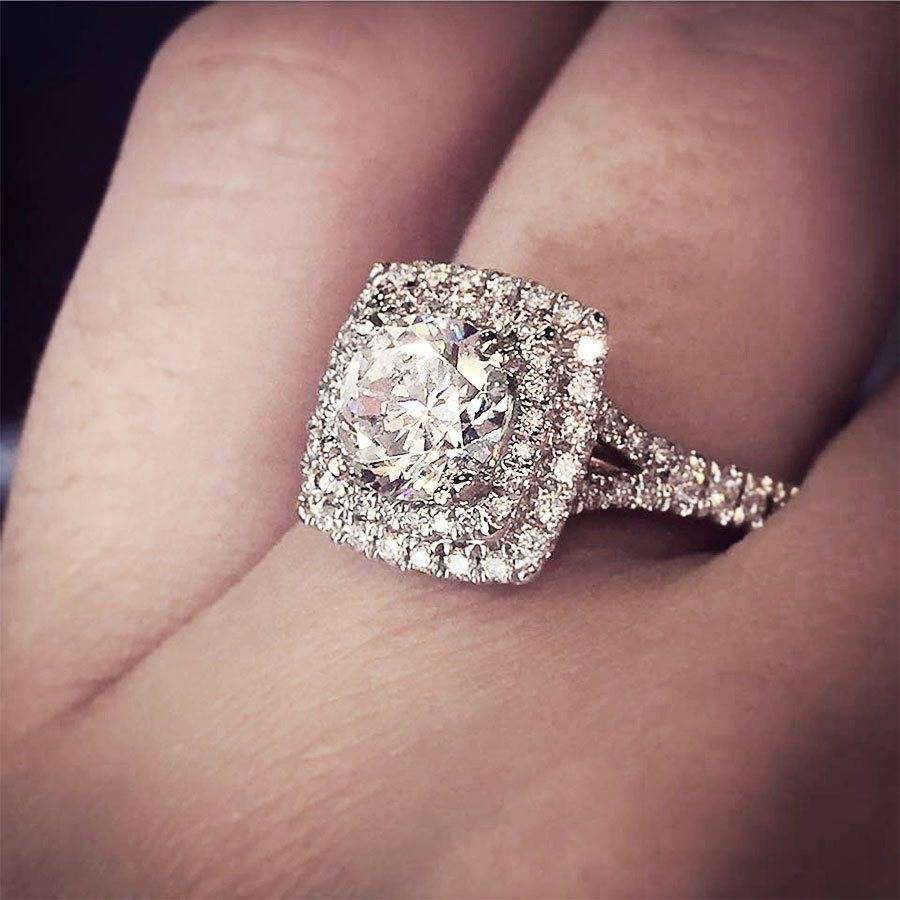Everything You Need to Know About Diamond Color

This week, we’ve been focusing on the 4 C’s you need to know to get a great deal on a diamond. So far, we’ve covered diamond Clarity Grades, Cut Grades, and carat weight. Today, I’ll be explaining diamond Color grades.
Diamonds come in a large variety of colors, some rarer and more valuable than others – think colored, or fancy diamonds in blue, pink, green or yellow. Where these fancy stones are graded on their intensity of color, the white diamond, most common in the jewelry industry, is prized for its lack of color.
The GIA’s scale of color grading is used by the diamond industry at large to grade both white diamonds and fancy colored diamonds on their respective and separate grading scales, so today I’ll be explaining GIA color grades. GIA Color grades for white diamonds range from D (colorless) through z (light colored diamonds).
The gradations in color grades are extremely difficult to detect from one stone to the next. The GIA grades diamonds in a specifically calibrated environment that removes as much outside color influence as possible, and even then the difference between a D and an E, for example, would be very hard to discern. Once diamonds enter a normal environment, where they’d spend most of their time anyway, the color difference become nearly impossible to spot.
However, the differences between the various brackets on the color scale are more noticeable; it’s these ranges that create the greatest price difference between color grades.
D through F grades are considered to be colorless. Just the opposite of what you learned in school, when it comes to diamonds a D or an F would be an excellent grade. There are some minor differences between each of these grades, but to anyone but a gemologist they would be next to impossible to spot. Diamonds of this grade are very valuable, and should be set in white gold or platinum to maintain the stone’s colorless appearance. When purchasing a large stone, opt for a color grade in this range, as the concentration of color increases along with carat size.
The next category of the grading scale is Near colorless, and it spans from G through J. These diamonds are not as rare as the colorless grades, so they’re significantly less expensive – sometimes half the price of a D, colorless diamond. Within this category, the price of the diamond will typically decrease as the color grades continue down the color scale. For example, a J colored diamond may be 30% less expensive than an H color. These diamonds are the best way to get a great price on a diamond that still looks colorless – particularly when shopping for the always popular brilliant cuts. Princess, Round, Radiants, Pears and Ovals all have more facets compared to a step cut like an emerald, so they appear even more colorless.
After this category comes the “Faint Color” grades of K – M. These grades may not appear outright colorful, but will have a warmer tone. Their prices are a fantastic bargain compared to colorless grades, and can be set in yellow gold, or even a warm rose gold, for a warm, beautiful appearance. If carat weight is most important to you (or cut and we suggest always getting the best cut grade your budget allows), then a faint color graded diamond is the way to go, set in a mounting that will compliment the diamond and balance out any yellow tint.
The next category is “very light color”. These diamonds have a noticeable yellow or brown-yellow tint, but are much less expensive than higher grades. These stones can work to your advantage, especially if you’re in the market for a yellow diamond. These stones can be set in yellow gold mountings that hug the bottom of the stone, reflecting even more yellow warmth into them. As you can see from this example, it creates the appearance of a fancy yellow diamond at a fraction of the cost.
Stones with grades s – z fall into the “Light color” category and can also be set in this manner. These faintly yellow diamonds are still not on the scale that GIA uses to grade fancy colored diamonds, but are popular overseas, particularly with Indian customers we see at the Hong Kong shows. As long as they are still quality cut stones with great clarity grades, they can make for gorgeous jewelry at extremely low prices.
When considering the best color grade for your diamond buying budget, Raymond Lee Jewelers recommends sticking with colorless grades only in the case of larger stones and those with Asscher, emerald, or other step cuts. For diamonds in these shapes that are under 1 carat, you can extend into the near colorless range of grades. When it comes to any brilliant cut shapes like round, princess, radiant, pear, etc. you can save a great deal by choosing a diamond in this range that falls lower on the near colorless spectrum. You can stretch your budget even further and choose a diamond grade from the faint color range and have it set in yellow gold. After that, your diamond will be a great deal, but will have a noticeable tint of color.
So, now that we’ve reached the color portion of our diamond breakdown, we can focus on how to get the best deal on a diamond all around. First and foremost, Raymond Lee Jewelers recommends putting Cut grade first; it’s the C that makes your diamond beautiful and gives it its sparkle. For this reason, we think you should always get the best cut grade your budget will allow, and dictate the rest of the diamond’s characteristics from there. Clarity is also important, as it affects a diamond’s inherent beauty, for the best deal, we recommend looking for a diamond in the VS range. Again, step cuts should be granted the highest grade available to your budget, as any inclusions or blemishes will be easier to see in their minimalist facets. Carat weight is made the most of when you find a diamond just a few points shy of your ideal carat weight, so the decrease in size will be miniscule and the decrease in price huge. Finally, as we just summed up, the most bang for your color grade buck can be found in the Near Colorless range.






Comments are closed.